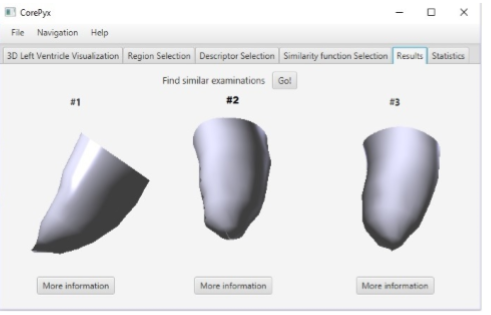Informations

The Content-Based Image Retrieval - CBIR aims to retrieval, in a image database, the most similar occurrences to an image provided as a query, from extracted characteristics of these objects. The use of CBIR concept, although exploited for recovery of two-dimensional images, is still under explored in the three-dimensional objects knowledge field. A systematic mapping it was conducted in order to identify descriptors used in applications that use medical images. Some shortcomings related to the use of descriptors locally, the predominance of traditional characteristics vectors as indexing structure, and metric distances to compute the similarity of these vectors were identified. However, other approaches, such as graphs, emerge as an alternative presenting high performance, since it is possible to apply efficient algorithms for searching and comparing specific for graph structures. Thus, descriptors and similarity measurement algorithms were developed and evaluated considering the global and local search for similar cases referring to the Cardiomyopathy patology. In order to achieve this goal, the following activities were carried out: literature review, definition of the database, implementation of descriptors and comparison measures by similarity, building a prototype of retrieval system, conducting tests with three-dimensional medical objects and analyzing the results. The results obtained with the methods developed were positive, reaching in some tests 90% of average precision in search retrieval. It was verified that the use of signal-based descriptors, in addition to being faster can be adapted to be used as local descriptors, it has been verified that using bipartite graphs as an indexing method and transforming the similarity computing into a network flow problem obtained a better result than the methods that used classical approaches of comparison. From the Cardiomyopathies perspective, it was possible to verify that the information of age andgendercontributetoimprovetheretrievalaccuracy, sincethisinformationisdirectly related to the left ventricular shape. These results confirmed the potential that contentbased retrieval in the medical context since it can support the diagnoses composition, besides contributing with Computation area, developing techniques for content-based retrieval in the three-dimensional domain.
Keywords – 3D CBIR, Cardiomiopaty, Shape descriptors, three-dimensional medical objects.




